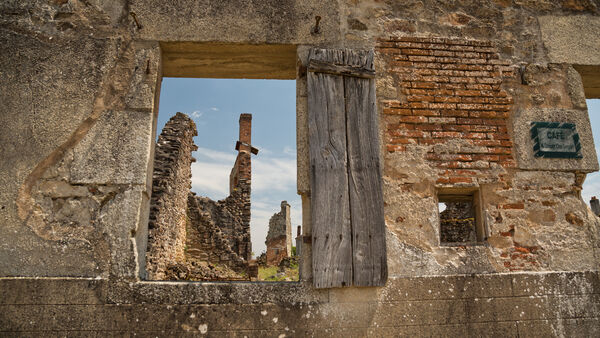Oradour-sur-Glane, France’s Ghost-Town Memorial to a WWII Massacre


By Rick Steves and Steve Smith
Lost in lush countryside, two hours north of the most popular and scenic stretch of the Dordogne River, Oradour-sur-Glane is one of the most powerful sights in all of France, and worth going out of your way to see.
The "Village des Martyrs," as it is now known, was machine-gunned and burned by Nazi troops on June 10, 1944 (four days after D-Day). With chilling attention to detail, the Nazis methodically rounded up the entire population of 642 townspeople, of whom about 200 were children. The women and children were herded into the town church, where they were tear-gassed and machine-gunned as they tried to escape the burning chapel. Oradour's men were tortured and executed. The town was then set on fire, its victims left under a blanket of ashes.
The reason for the mass killings remains unclear. Some say the Nazis wanted revenge for the kidnapping of one of their officers (by French Resistance fighters in a neighboring village), but others believe the Nazis were simply terrorizing the populace in the wake of D-Day.
Today, the ghost town, left untouched for more than 70 years (by order of then-general Charles de Gaulle), is well known by French schoolchildren, most of whom make a pilgrimage here. A sign greets every pilgrim who enters with only one English word: Remember.
The village is well-signed for drivers coming north from Sarlat (from the north, take A-10 to Poitiers, then follow signs toward Limoges and turn south at Bellac). If traveling sans car, take the train to Limoges and either hop an infrequent 40-minute bus or call a taxi.
Many start an Oradour visit with a stop at its underground museum (Centre de la Mémoire), which gives a standard timeline of WWII events, shows haunting footage of everyday life in Oradour before the attack, offers a day-by-day account of the town's destruction, and plays a dramatic 13-minute movie (subtitled in English). But the museum is pricey for what it offers, and not a must for appreciating the site. It is smart, however, to buy one of the inexpensive English maps sold at the museum's bookstore, as the site has almost no posted information.
Above ground, hushed visitors walk the length of Oradour's main street, past gutted, charred buildings and along lonely streetcar tracks. The modest church still has its bullet-pocked altar. Plaques on remaining buildings provide the names and occupations of the people who lived there. After passing several former cafés, butcher shops, and one hotel-restaurant, it becomes clear that Oradour was once not so different from the many Dordogne villages that now draw tourists for their small-town charm.
In the village cemetery, the names of all who died in the massacre on that June day are etched into a wall, and glass cases hold ashes of some of the victims. Nearby is a bunker-like underground memorial that displays the personal possessions found after the attack: eyeglasses, children's toys, sewing machines, cutlery, pocket watches, and so on.
It's shocking just how big and ruined the town is — a harrowing embodiment of the brutality and pointlessness of war.
Steve Smith is the co-author of the Rick Steves France guidebook.

